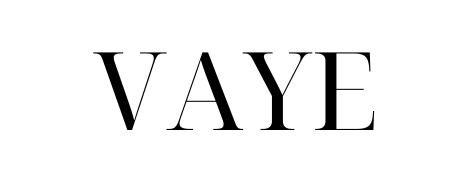
Help, I have six savings folders, but I'm still broke. What am I doing wrong?
Share
Okay, let's be honest: you bought a stack of savings folders, completely motivated to get your finances in order. You even spent time neatly labeling everything. One folder for groceries, one for your dream vacation, and of course, one for your coffee addiction (because priorities, right?). But after a few months, you're still short on cash. How is that possible?
You're not alone. Seriously, it happens all the time. And guess what? It's not your fault, but a few common mistakes we all make. Let's break them down, so your savings folders will work the way you hope.
1. Too many categories, too little focus
This is probably the most common mistake. You start off enthusiastically and create a separate folder for everything: groceries, rent, dining out, Netflix, clothes, gifts... before you know it, you have 10 folders and no idea what's going where.
The problem? Too many categories create chaos. And chaos is the opposite of what you're trying to achieve. If you put a little money into everything, it might seem like you're doing a lot, but in reality, there's not enough left over to make a real difference.
What can you do?
-
Keep it simple. Start with three or four folders max. Think about: fixed expenses, savings, fun things, and maybe an emergency fund.
-
Don't stop adding more categories until you've found a good rhythm with the basics.
-
Evaluate your folders regularly: are you using them all effectively? Or could you merge some of them?
-
Try a savings method that works for you: envelope system, percentage system, or cash stuffing.
👉 Check out our savings folder collection for an overview of handy and stylish options!
A handy tip: try to periodically evaluate how much you actually use and whether there's any overlap in certain categories. This way, you'll avoid having folders that are rarely used but are still costing you money in your budget planning.
You can also experiment with different materials and designs for your savings wallets to find what works best for you. Some people find transparent wallets convenient because they can immediately see how much money is inside, while others prefer discreet wallets so they're less tempted to take money out.
2. Unrealistic savings goals
It sounds so appealing: "I'm going to save €5,000 in a year!" But if you can only spare €10 each month, it becomes a long and frustrating road. Unrealistic goals are demotivating, because it feels like you're never making any progress.
And how often does this happen? You save for a while, get discouraged because it's not going fast enough, and then give up completely. Sound familiar?
What can you do?
- Set smaller, achievable goals. For example: save €100 for a fun day out. Once you reach that goal, you'll get a boost to keep saving.
- Break big goals into smaller pieces. Want to save €1,200 for a vacation? Make it a goal to put aside €100 each month. That'll feel much more achievable.
- Track your progress in a budget planner to keep yourself motivated.
- Use visual aids like savings challenges or trackers to show your progress.
- A smart approach is to reevaluate your savings every month. Sometimes your financial situation changes, meaning you can save more or less. Flexibility in your savings goals keeps you motivated and save realistically.
Need some extra motivation? Reward yourself when you reach a savings goal. This doesn't have to be a big expense; treat yourself to a fun activity or a small gift. This keeps saving fun and makes it feel less like an obligation.
3. Not building a routine
Savings folders only work if you actually use them. And no, putting some money in once a month and then forgetting about it doesn't count. The idea is to fill your folders regularly (e.g., weekly) and keep track of what's happening. If you don't, you'll quickly lose track.
What can you do?
- Make it a regular time. For example, set aside fifteen minutes every Sunday to update your folders.
- Work with cash. It feels much more real when you have physical money in your hands. Plus, you can immediately see your stack growing!
- Write down what you put in each folder and what you used it for. This way you stay in control and avoid accidentally spending your holiday money on groceries.
- Consider setting up an automatic transfer to your savings account as an alternative to cash stuffing.
💡 Check out our budget planners to keep track of your savings goals.
It can be helpful to reward yourself for a good savings routine. For example, set up a small "success folder" where you put some money if you consistently stick to your savings plan for a month. This makes saving fun and motivating!
You can also share savings goals with friends or family. By doing a savings challenge together, you can motivate each other and hold each other accountable. Sometimes a little healthy competition can be an extra incentive!
Closing: It's okay to be a little messy
No one saves perfectly, and they don't have to. The most important thing is to start and keep trying. If you notice something isn't working, simply adjust it. Savings folders are a tool, not a magic bullet. And as with any tool, it takes time to figure out exactly how to use them best.
So if you're still broke despite your savings folders, know that you're not alone. Start small, keep it simple, and give yourself room to make mistakes. You'll get there—really!
💰 Want to expand your savings folder collection? Then check out our collection and start saving smartly today!
